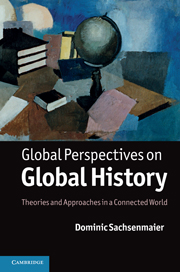Book contents
- Frontmatter
- Contents
- Acknowledgments
- Introduction Neglected diversities
- 1 Movements and patterns: environments of global history
- 2 A term and a trend: contours in the United States
- 3 On the margins of a troubled nation – approaches in Germany
- 4 Another world? Thinking globally about history in China
- Epilogue: Global history in a plural world
- Bibliography
- Index
4 - Another world? Thinking globally about history in China
Published online by Cambridge University Press: 05 June 2012
- Frontmatter
- Contents
- Acknowledgments
- Introduction Neglected diversities
- 1 Movements and patterns: environments of global history
- 2 A term and a trend: contours in the United States
- 3 On the margins of a troubled nation – approaches in Germany
- 4 Another world? Thinking globally about history in China
- Epilogue: Global history in a plural world
- Bibliography
- Index
Summary
Patterns of Chinese historiography prior to the mid-nineteenth century
In many Western societies, central currents of academic scholarship have long treated the main patterns of the European past as a largely autochthonous process. In particular, present cultures of historiography in Europe are often portrayed as outcomes of homegrown traditions and conceptual innovations. For Chinese scholars and public intellectuals, however, such professional negligence of global entanglements and influences from the outside world has no longer been possible for generations. In contrast to many popular notions of continued cultural solipsism in the East, forms of global consciousness have played much more central roles within the community of modern Chinese historians than among their peers in most Western academic systems. Since the late nineteenth century, it has been almost impossible to conceptualize Chinese history without paying attention to the wide spectrum of discontinuities and influences, which in some cases have been referred to as the “internationalization of China.” Even the most patriotic accounts of modern Chinese history cannot deny the massive impact of international powers and global transformations on the former Middle Kingdom, particularly from the mid-nineteenth century onwards. Because the ensuing waves of changes also reconfigured China's institutions of higher learning and sociologies of knowledge, it is almost impossible to argue that Chinese historical scholarship in its present state is primarily the product of endogenous developments.
- Type
- Chapter
- Information
- Global Perspectives on Global HistoryTheories and Approaches in a Connected World, pp. 172 - 231Publisher: Cambridge University PressPrint publication year: 2011



